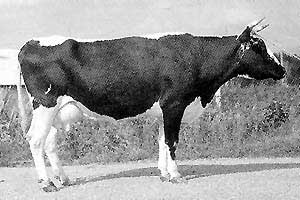Type the name of the breed you're looking for below
[wpdreams_ajaxsearchlite] Don't see the breed your're looking for? Click here and let us know!
Istoben cattle
| Place of Origin | Russia |
| Origin | The breed was established in the former Vyatka province (now Kirov region) by crossing the local Great Russian cattle with the Kholmogory, Swiss Brown, Dutch and East Friesian breeds. The development of dairy husbandry in this region was aided by a good feed base (from flood lands in the alluvial plains of the Vyatka and Moloma rivers), the near-by markets for selling dairy products and organized butter-making. The breed was named after the settlement of Istoben where a large creamery was set up; the best herds were concentrated in its vicinity. The importation of the Kholmogory and Swiss Brown breeds began late in the 19th and early in the 20th century; later the Yaroslavl breed was imported. During 1936-37 there was an infusion of East Friesian blood. Nevertheless, crossing of the local cattle with the above-mentioned breeds was quite limited and had no major effect on the productivity of the local herds. During selection the major emphasis was placed on fat content. In 1935 the National Herdbook of the Istoben cattle was opened. The breed was recognized in 1943. |
| Purpose | Beef and Dairy |
| Appearance | The animals of this breed have clearly-defined dairy features; their constitution is strong and conformation compact. The head is somewhat coarse with a long face. The chest is deep and long but not wide enough; the ribs are well sprung, flat with a large distance between them. The withers are narrow and medium in height. The back and loin are long enough; the rump is long and fairly wide at the hips but narrow at the pinbones. The legs are frequently wrongly set; cow hocks and knock knees as well as bowed hind legs are occasionally observed. The musculature is poorly developed. Common defects are as follows: narrow chest, sway back, sloping and narrow rump, wrongly set legs. Coat color is mostly black or black-and-white (up to 70%), sometimes (about 25%) red or red-and-white. The udder of most cows is cup-shaped and medium in size. |
| Horns | Small horns |
| Cows Average Weight | 430 – 540 kg (950 - 1200 lbs) |
| Bulls Average Weight | 726 kg (1,600 lbs) |



